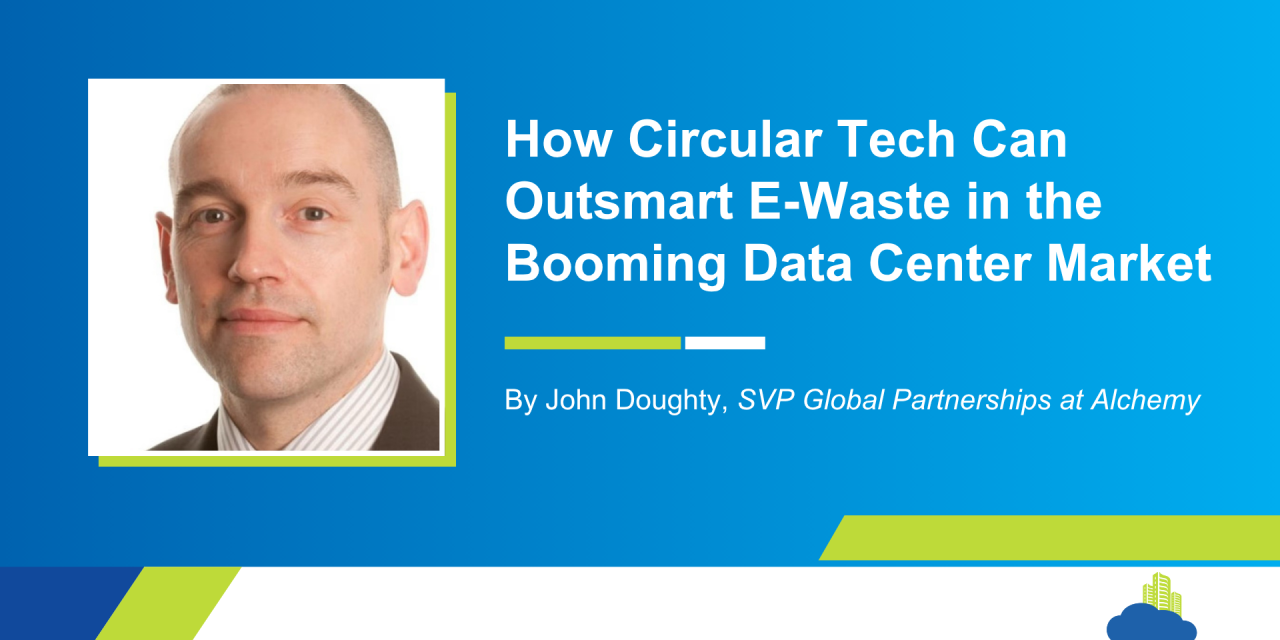The explosive growth of the US data center construction market is setting new records – projected to reach $214.16 billion by 2030, with a compound annual growth rate of 15%. This expansion is being driven by the relentless advance of AI and cloud technologies, which now underpin everything from real-time inference to complex model training workloads.
As Mary Meeker’s AI trends report notes, “hyperscalers and AI-first companies alike are pouring billions into building out compute-ready capacity – not just for storage, but for real-time inference and model training workloads that require dense, high-power hardware.” But while the sector’s horizons keep expanding, a critical challenge is approaching on the other side of the boom: what happens to the hardware once these new facilities reach their first refresh cycle? In an industry where the lifespan of most servers is just 4 to 6 years, disposal and replacement are already raising questions about cost and environmental impact.
The scale and urgency of data center e-waste
The environmental implications of the data center boom are staggering – and growing more urgent every year. As data centers multiply, the industry faces a mounting challenge on how to responsibly manage the electronic waste generated.
Even a small or mid-sized data center typically houses thousands of servers, each one integral to powering modern digital experiences. The range balloons dramatically with hyperscale facilities, the backbone of today’s AI and cloud-based applications, where a single site can host hundreds of thousands of servers.
With each innovation cycle, these sprawling complexes embark on massive hardware refreshes, swapping out equipment to maintain peak performance and efficiency. This turnover creates a constant stream of retired servers. Multiply this effect across the growing number of facilities, and the result is an avalanche of e-waste that poses a serious environmental threat if not properly managed.
Landfills are also ill-equipped to handle electronic components; when facilities dispose of servers improperly, they can leach hazardous materials into soil and groundwater. Compounding this environmental harm is the lost opportunity to recover valuable resources, such as rare earth metals, that manufacturers could reuse in new devices.
A systemic circular solution
Meeting the challenge of data center e-waste requires more than recycling individual pieces of equipment. It demands a shift from legacy recycling to true, systemic circularity – reimagining how technology is managed, reused, and reintegrated into the economy at scale.
Servers and IT equipment are carefully collected, assessed, and given a second life, either through direct refurbishment, repurposing, or responsibly harvesting them for valuable parts. This process extends the lifecycle of devices and drastically reduces the environmental footprint of modern computing.
At Alchemy, we also understand that achieving circularity is not just about finding new homes for old servers. It’s about creating the systems and infrastructure that support product takeback, refurbishment, and reintegration on an ongoing basis.
The business case for refurbished tech
The rising cost of technology presents real challenges for data centers of all sizes. Enterprise IT budgets are under pressure, and businesses are increasingly searching for ways to maximize value without sacrificing capability or security. Importantly, even new data centers are finding value in refurbished technology. With long lead times for new equipment and shifting build schedules, many are turning to refurb solutions which offer a compelling solution. They enable companies to trade in their existing hardware for financial credits and access premium, enterprise-grade devices at a fraction of the price.
Structured trade-in systems and remarketing programs are essential to making this model viable at scale. By streamlining the process of collecting, evaluating, and refurbishing equipment, these systems allow organizations to easily transition to more cost-effective devices while responsibly managing their tech refresh cycles. Structured trade-ins not only recapture the residual value locked in outgoing hardware but also help offset the expense of upgrading.
Despite these advantages, some organizations remain hesitant, mainly because of common misconceptions about the quality and security of refurbished devices. However, with proper refurbishment standards, rigorous data sanitization, and transparent grading systems, these concerns can be addressed and resolved. Educating stakeholders and setting clear expectations around device certification and warranties are best practices that further build confidence in the process.
For businesses with significant technology portfolios – especially those facing high IT spending and wanting to address Scope 3 emissions as part of sustainability goals – integrating refurbished devices into procurement strategies is no longer optional. Refurbished devices can offer cost reductions of up to 70% compared to new ones, making them good for business and the planet.
Aside from cutting costs, circular solutions buffer organizations against supply chain disruptions and tariff pressures by making high-quality tech more accessible, even when new inventory is scarce or expensive. In doing so, they support a more sustainable data infrastructure, enabling companies to thrive in a digital economy without adding to the world’s waste problem.
Toward a resilient and sustainable digital future
The data center construction boom shows no signs of slowing down. If the industry is to meet the demands of AI, cloud, and continued hyperscale expansion while minimizing its environmental impact, now is the time to embrace circular practices at every stage of the data center lifecycle.
By prioritizing refurbishment, structured trade-ins, and recommerce, companies can significantly reduce environmental harm, strengthen supply chains, and build a more resilient, future-proof digital ecosystem.
About the Author:
John Doughty is SVP of Global Partnerships at Alchemy, the world’s fastest-growing global circular technology company. Based in Kansas City, John leads the expansion of Alchemy’s global presence, driving strategic partnerships across 60 markets. With over 30 years’ experience in the mobile and technology services industries, John previously held leadership roles at TD Synnex, Exertis, Brightstar, LucidCX, and Tech 21. He is committed to building strong teams and sustainable partnerships that power continued global success, with a passion for driving leadership and growth.


